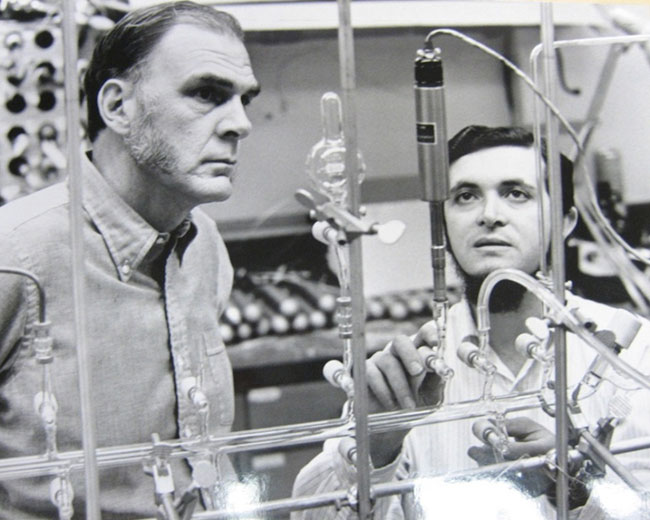How UC research sounded the alarm on the ozone layer
Not that long ago, people around the world got together to fix a global environmental problem before it was too late.
That might sound hard to believe today, given the polarized politics on climate change, but it’s true.
In 1974, two experts in atmospheric chemistry from UC Irvine, Mario Molina and F. Sherwood Rowland, made international headlines with their discovery that the widespread use of chlorofluorocarbons (CFCs) in aerosol spray cans was destroying the Earth’s ozone layer, the shield that protects us from harmful ultraviolet radiation.
Their research galvanized the world into action, and today, the hole in the ozone is healing.

F. Sherwood Rowland, left, and Mario Molina, right, in the lab.
It’s a story that underscores the value of basic research, and the importance of scientists making their work understood by a wider, general audience: Molina and Roland first reported their findings in the peer-reviewed journal Nature, but given the urgent implications of their discovery, decided to go public.
“The years following the publication of our paper were hectic, as we had decided to communicate the CFC-ozone issue not only to other scientists, but also to policy makers and to the news media; we realized this was the only way to insure that society would take some measures to alleviate the problem,” Molina explained.
Some chemical companies were skeptical and wanted more proof, but consumers were already choosing more environmentally-friendly products. In 1985, a team of British scientists ended the debate when they documented a giant hole in the ozone layer over the arctic.
Companies began to remove CFC-containing products from the market, including spray paints, industrial coolants and hair sprays. Global leaders worked together on an agreement to phase out the use of CFCs, an action that was codified with the 1987 Montreal Protocol.
You can read the full story here.


